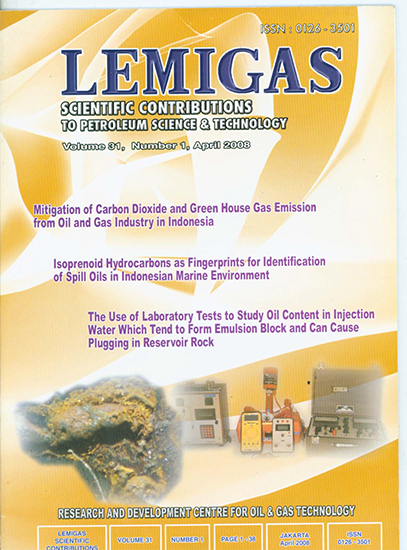Comparison Of Local And Import Sands Quality Laboratory Tests Results For Used In Hydraulic Fracturing Operations
DOI:
https://doi.org/10.29017/SCOG.31.1.860Keywords:
local and import uncoated sands, API – RP 56, sand quality laboratory testsAbstract
Sand quality laboratory tests have been carried out on local and import uncoated sands. Based on results of sand sieve, roundness, sphericity, turbidity, acid solubility and crush resistance at 3000 psi quality tests of import uncoated sand has better quality than local sand. The import sand fulfills API – RP 56 specification requirements and will be able used in hydraulic fracturing operation. Whereas, the local uncoated sand does not achieve API - RP 56 specification requirements.
References
Clark, J. A. and Quadir, J. A: â€Proppant Transport
in Hydraulic Fractures: A Critical Review
of Particle Settling Velocity Equation†paper SPE
API Recommended Practice 56 for Testing Sand
Used in Hydraulic Fracturing Operations.
Waters,A.B.:â€Hydraulic Fracture – What is it ?â€
J.Pet Tech. (August 1981), 1416.
Cutler, R.A. et al.: â€Comparison of the Fracture
Conductivity of Commercially Available and
Expeimental Proppants at Intermediate and High
Closure Stresses,†Soc. Pet.Eng. J (April 1985,
p. 157 – 170.
Sinclair, A.R.:â€A New Proppant for Hydraulic
Fracturing,†paper presented at the 1978 ASME
Energy Technology Conference, Houston.
Hall,C.D and Dollarhide,F.E.: Performance of
Fracturing Fluid Loss Agent Under Dynamic
Condition, J. Pet. Tech. July 1968, 763 – 768,
AIME, 243.
Downloads
Issue
Section
License
Copyright (c) 1970 SCIENTIFIC CONTRIBUTIONS OIL AND GAS (SCOG)

This work is licensed under a Creative Commons Attribution 4.0 International License.
Authors are free to Share — copy and redistribute the material in any medium or format for any purpose, even commercially Adapt — remix, transform, and build upon the material for any purpose, even commercially.
The licensor cannot revoke these freedoms as long as you follow the license terms, under the following terms Attribution — You must give appropriate credit , provide a link to the license, and indicate if changes were made . You may do so in any reasonable manner, but not in any way that suggests the licensor endorses you or your use.
No additional restrictions — You may not apply legal terms or technological measures that legally restrict others from doing anything the license permits.














